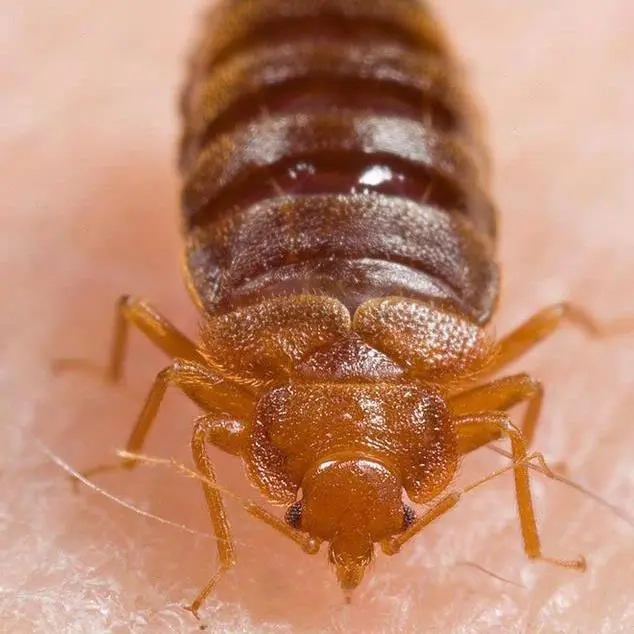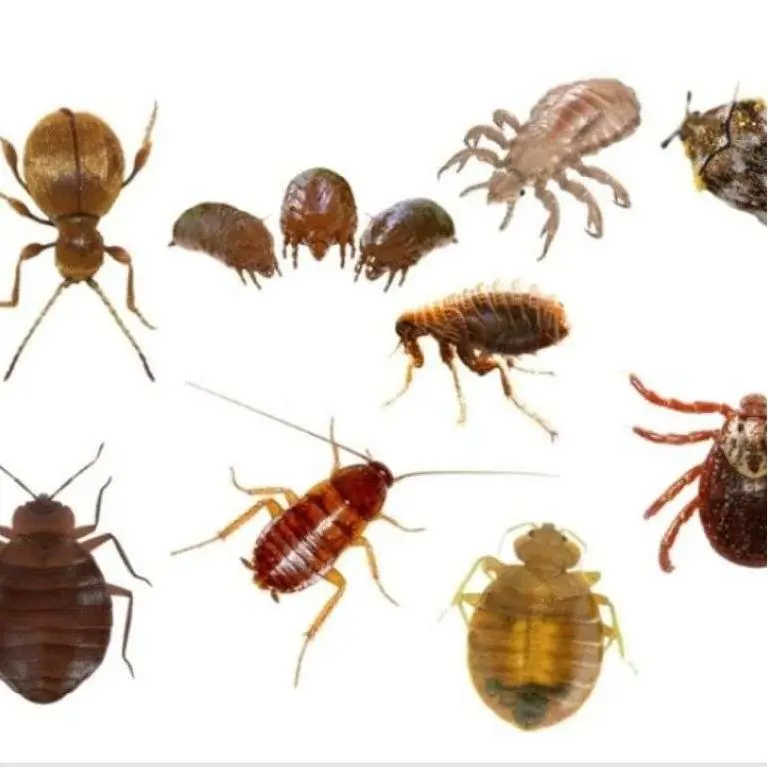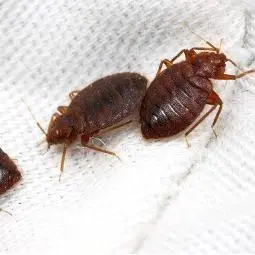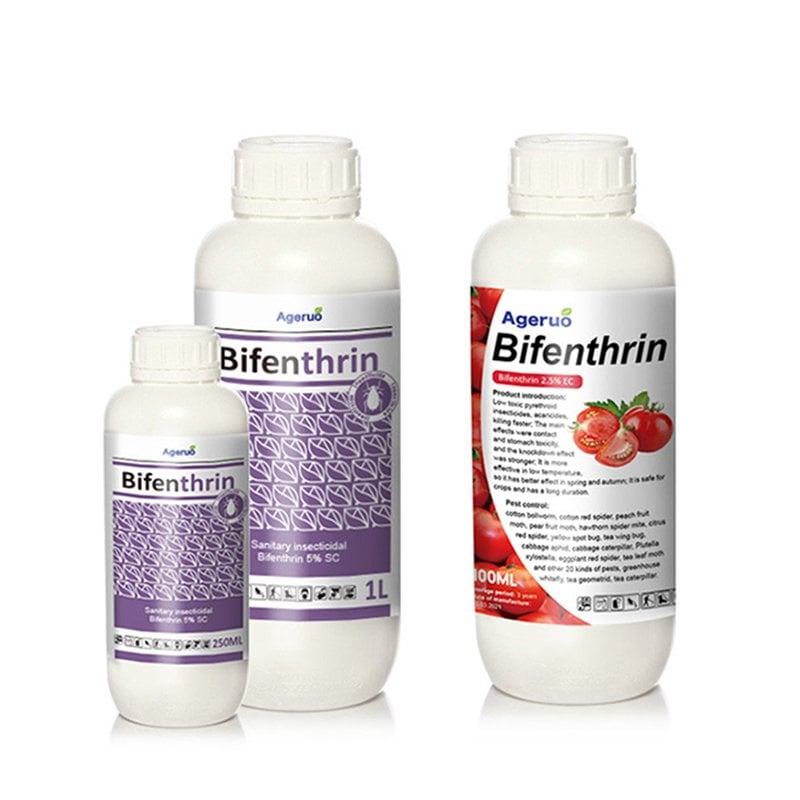Does Bifenthrin Kill Bed Bugs?
Yes, bifenthrin can kill bed bugs, but it is generally not considered the most effective solution on its own for bed bug infestations. While bifenthrin, a pyrethroid insecticide, can act as a contact killer for bed bugs, its effectiveness may be limited due to resistance development in bed bug populations. In this article, we’ll explore how bifenthrin works on bed bugs, its limitations, and other considerations for dealing with bed bug infestations.
What Is Bifenthrin?
Bifenthrin is a synthetic pyrethroid insecticide that is widely used in pest control. Pyrethroids are a class of chemicals that mimic the natural insecticidal properties of pyrethrins, which are derived from chrysanthemum flowers. Bifenthrin acts on the nervous system of insects, disrupting normal nerve function and ultimately killing them.
Bifenthrin is used to control a broad spectrum of pests, including ants, termites, cockroaches, fleas, and ticks, among others. It is applied both as a contact insecticide and sometimes in residual formulations for longer-lasting effects.
How Bifenthrin Works on Bed Bugs
Bifenthrin works by interfering with the nervous system of insects, causing a disruption in nerve impulses and leading to paralysis and death. When bed bugs come into contact with bifenthrin, the chemical affects their nervous system, leading to convulsions, paralysis, and eventually death. This process can take a few hours after exposure.
However, it’s important to note that while bifenthrin can kill individual bed bugs that come into direct contact with the pesticide, it is not as effective against eggs or hidden bed bugs, as these may be less exposed to the insecticide. Bifenthrin typically works on adult bed bugs and nymphs, but its residual activity may not last long enough to eliminate an infestation fully.
Limitations of Bifenthrin for Bed Bug Control
While bifenthrin can kill bed bugs that directly contact the treated surfaces, it has several limitations when used alone to manage bed bug infestations:
1. Resistance
Bed bugs have developed significant resistance to many insecticides, including pyrethroids like bifenthrin. This resistance means that in certain regions, bifenthrin may not be as effective at killing bed bugs as it once was. Bed bugs that have developed resistance may survive exposure to bifenthrin and continue to reproduce, exacerbating the infestation.
2. Limited Penetration
Bifenthrin is effective only on the surfaces it is applied to. Bed bugs tend to hide in cracks and crevices, behind furniture, in bedding, and inside walls, where the insecticide may not reach effectively. Because of this, bifenthrin may not eliminate bed bugs that are hidden deep in such areas.
3. Eggs Are Not Affected
One of the most significant challenges in eliminating bed bugs is the fact that eggs are often unaffected by insecticides like bifenthrin. Bed bug eggs are more resistant to chemical treatments, and since eggs can hatch several days or weeks after treatment, the infestation may continue despite insecticide application.
4. Short Residual Activity
While bifenthrin has some residual effect, it may not last long enough to kill any new bed bugs that may enter treated areas later. The insecticide may break down after a few days or weeks, depending on environmental conditions (e.g., humidity, temperature), reducing its ability to control new pests.
How to Use Bifenthrin for Bed Bug Control
If you choose to use bifenthrin as part of your bed bug control strategy, it’s crucial to follow proper application techniques for maximum effectiveness:
1. Read and Follow Label Instructions
Always read and follow the manufacturer’s label instructions carefully to ensure you apply bifenthrin safely and effectively. This will include guidelines on application rates, safe handling, and precautions to avoid exposure.
2. Target Hiding Spots
Bifenthrin should be applied to areas where bed bugs are likely to hide, including cracks and crevices in walls, under furniture, along baseboards, and inside bed frames. Bed bugs often hide in places that are difficult to reach, so thorough application to these areas is crucial.
3. Use Integrated Pest Management (IPM)
For best results, use bifenthrin as part of a larger Integrated Pest Management (IPM) approach. This can include non-chemical methods like vacuuming bed bugs, washing and drying infested bedding on high heat, and using encasements on mattresses and pillows to trap and starve any remaining bugs.
Alternative Methods for Bed Bug Control
Given the limitations of bifenthrin and the possibility of resistance, it’s important to use additional methods to control bed bug infestations effectively. Some other strategies include:
1. Heat Treatment
Bed bugs are highly sensitive to temperature changes. Applying heat treatment (above 120°F or 49°C) to infested areas can kill bed bugs and their eggs. This method can be used in combination with insecticides for more thorough control.
2. Diatomaceous Earth (DE)
Diatomaceous Earth is a non-toxic powder that dehydrates bed bugs and other pests. It can be sprinkled in cracks and crevices where bed bugs are hiding. Unlike chemical insecticides, DE works mechanically by damaging the outer shell of the bed bug, causing it to lose moisture and die.
3. Encasements
Using bed bug-proof encasements on mattresses and pillows helps trap bed bugs that are hiding inside. The encasements prevent bed bugs from entering or exiting the mattress, essentially starving them. This method is particularly useful for long-term management of an infestation.
4. Professional Pest Control
In cases of severe infestations, it’s often best to hire a professional pest control company that can apply a combination of insecticides, heat treatments, and other methods to eliminate bed bugs effectively. Professionals also have access to more powerful treatments that may not be available to the general public.
Conclusion
Does bifenthrin kill bed bugs? The answer is yes, but it may not be the most effective solution on its own for eliminating a bed bug infestation. While bifenthrin can kill bed bugs upon direct contact, its limitations—such as resistance, limited penetration, and inability to target eggs—mean that it may not provide long-term control of the problem.
For best results, bifenthrin should be part of a broader, integrated approach that includes other treatments like heat, diatomaceous earth, and non-chemical methods. In severe cases, seeking professional help is recommended to ensure the infestation is completely eradicated.
In summary, bifenthrin can be part of the solution, but it is important to combine it with other methods and follow a strategic, multi-pronged approach to completely eliminate bed bugs from your home.
Yes, bifenthrin can kill bed bugs, but it is generally not considered the most effective solution on its own for bed bug infestations. While bifenthrin, a pyrethroid insecticide, can act as a contact killer for bed bugs, its effectiveness may be limited due to resistance development in bed bug populations. In this article, we’ll explore how bifenthrin works on bed bugs, its limitations, and other considerations for dealing with bed bug infestations.
What Is Bifenthrin?
Bifenthrin is a synthetic pyrethroid insecticide that is widely used in pest control. Pyrethroids are a class of chemicals that mimic the natural insecticidal properties of pyrethrins, which are derived from chrysanthemum flowers. Bifenthrin acts on the nervous system of insects, disrupting normal nerve function and ultimately killing them.
Bifenthrin is used to control a broad spectrum of pests, including ants, termites, cockroaches, fleas, and ticks, among others. It is applied both as a contact insecticide and sometimes in residual formulations for longer-lasting effects.
How Bifenthrin Works on Bed Bugs
Bifenthrin works by interfering with the nervous system of insects, causing a disruption in nerve impulses and leading to paralysis and death. When bed bugs come into contact with bifenthrin, the chemical affects their nervous system, leading to convulsions, paralysis, and eventually death. This process can take a few hours after exposure.
However, it’s important to note that while bifenthrin can kill individual bed bugs that come into direct contact with the pesticide, it is not as effective against eggs or hidden bed bugs, as these may be less exposed to the insecticide. Bifenthrin typically works on adult bed bugs and nymphs, but its residual activity may not last long enough to eliminate an infestation fully.
Limitations of Bifenthrin for Bed Bug Control
While bifenthrin can kill bed bugs that directly contact the treated surfaces, it has several limitations when used alone to manage bed bug infestations:
1. Resistance
Bed bugs have developed significant resistance to many insecticides, including pyrethroids like bifenthrin. This resistance means that in certain regions, bifenthrin may not be as effective at killing bed bugs as it once was. Bed bugs that have developed resistance may survive exposure to bifenthrin and continue to reproduce, exacerbating the infestation.
2. Limited Penetration
Bifenthrin is effective only on the surfaces it is applied to. Bed bugs tend to hide in cracks and crevices, behind furniture, in bedding, and inside walls, where the insecticide may not reach effectively. Because of this, bifenthrin may not eliminate bed bugs that are hidden deep in such areas.
3. Eggs Are Not Affected
One of the most significant challenges in eliminating bed bugs is the fact that eggs are often unaffected by insecticides like bifenthrin. Bed bug eggs are more resistant to chemical treatments, and since eggs can hatch several days or weeks after treatment, the infestation may continue despite insecticide application.
4. Short Residual Activity
While bifenthrin has some residual effect, it may not last long enough to kill any new bed bugs that may enter treated areas later. The insecticide may break down after a few days or weeks, depending on environmental conditions (e.g., humidity, temperature), reducing its ability to control new pests.
How to Use Bifenthrin for Bed Bug Control
If you choose to use bifenthrin as part of your bed bug control strategy, it’s crucial to follow proper application techniques for maximum effectiveness:
1. Read and Follow Label Instructions
Always read and follow the manufacturer’s label instructions carefully to ensure you apply bifenthrin safely and effectively. This will include guidelines on application rates, safe handling, and precautions to avoid exposure.
2. Target Hiding Spots
Bifenthrin should be applied to areas where bed bugs are likely to hide, including cracks and crevices in walls, under furniture, along baseboards, and inside bed frames. Bed bugs often hide in places that are difficult to reach, so thorough application to these areas is crucial.
3. Use Integrated Pest Management (IPM)
For best results, use bifenthrin as part of a larger Integrated Pest Management (IPM) approach. This can include non-chemical methods like vacuuming bed bugs, washing and drying infested bedding on high heat, and using encasements on mattresses and pillows to trap and starve any remaining bugs.
Alternative Methods for Bed Bug Control
Given the limitations of bifenthrin and the possibility of resistance, it’s important to use additional methods to control bed bug infestations effectively. Some other strategies include:
1. Heat Treatment
Bed bugs are highly sensitive to temperature changes. Applying heat treatment (above 120°F or 49°C) to infested areas can kill bed bugs and their eggs. This method can be used in combination with insecticides for more thorough control.
2. Diatomaceous Earth (DE)
Diatomaceous Earth is a non-toxic powder that dehydrates bed bugs and other pests. It can be sprinkled in cracks and crevices where bed bugs are hiding. Unlike chemical insecticides, DE works mechanically by damaging the outer shell of the bed bug, causing it to lose moisture and die.
3. Encasements
Using bed bug-proof encasements on mattresses and pillows helps trap bed bugs that are hiding inside. The encasements prevent bed bugs from entering or exiting the mattress, essentially starving them. This method is particularly useful for long-term management of an infestation.
4. Professional Pest Control
In cases of severe infestations, it’s often best to hire a professional pest control company that can apply a combination of insecticides, heat treatments, and other methods to eliminate bed bugs effectively. Professionals also have access to more powerful treatments that may not be available to the general public.
Conclusion
Does bifenthrin kill bed bugs? The answer is yes, but it may not be the most effective solution on its own for eliminating a bed bug infestation. While bifenthrin can kill bed bugs upon direct contact, its limitations—such as resistance, limited penetration, and inability to target eggs—mean that it may not provide long-term control of the problem.
For best results, bifenthrin should be part of a broader, integrated approach that includes other treatments like heat, diatomaceous earth, and non-chemical methods. In severe cases, seeking professional help is recommended to ensure the infestation is completely eradicated.
In summary, bifenthrin can be part of the solution, but it is important to combine it with other methods and follow a strategic, multi-pronged approach to completely eliminate bed bugs from your home.







